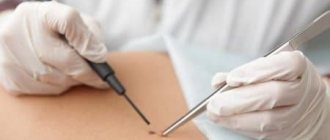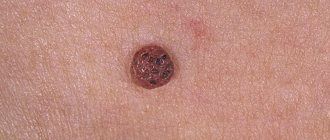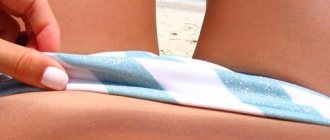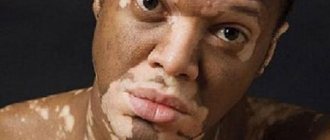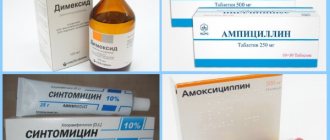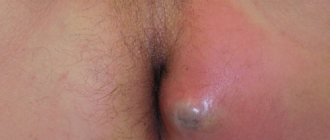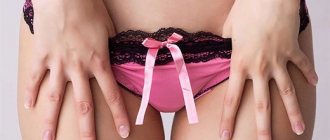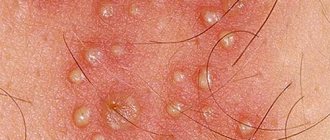The modern method of cryodestruction of papillomas allows you to eliminate formations using exposure to low-temperature substances, that is, freezing. This most often occurs when using liquid nitrogen, which can destroy the pathological papilloma tissue, but not damage the surrounding healthy skin. After the cryodestruction procedure, there is no bleeding, since liquid nitrogen blocks the arteries around the area of its effect. The cryodestruction sites heal very quickly and are not covered with scars.
The principle of the effect of the substance
In the environment around people there is up to 80% nitrogen gas, which is not perceptible to humans. Nitrogen can turn into liquid form under the influence of high pressure, and its temperature becomes -196 degrees. Liquid nitrogen evaporates for quite a long time, so such a low temperature can be easily used for various purposes.
Content:
- The principle of the effect of the substance
- Cryodestruction technique
- Indications for cryodestruction
- Complications and side effects of cryodestruction
- How to prepare and what to do after the procedure
- Benefits of cryodestruction
The basis of the cryodestruction technique is the freezing of blood vessels inside the tumor and its tissue. When the tissue begins to thaw, ice crystals block the vessels of the papilloma, which leads to oxygen starvation of the neoplasm cells.
Thus, papillomas are damaged during cryodestruction not during the freezing process, but during the thawing period. After thawing, the neoplasm remains in the same place until the leukocytes completely destroy its structure and tear the papilloma away from the skin. Destroyed cells entering the body strengthen immunity to papillomaviruses.
As a result, after exposure to liquid nitrogen, the papilloma dies and is easily removed. During the freezing process under the influence of low temperatures, healthy tissues experience shock, lipid-protein complexes are disrupted, which subsequently help healthy cells to reject diseased cells.
This process is called tissue necrosis. Over the course of 3-4 days after freezing the tumor with liquid nitrogen, the cells beneath it intensively regenerate, and the papilloma turns into a scab. Complete rejection of the scab occurs 2-3 weeks after freezing, depending on the individual characteristics of the human body.
Do I need to tell all my sexual partners about my warts?
HPV is transmitted through sexual contact, so if you have venereal warts, you should tell your sexual partner about them . He or she needs to know that they too can be infected. Both partners can benefit from a consultation with a specialist and a medical examination.
At the same time, it is not considered necessary to inform future sexual partners about warts that are in the distant past. The fact is that it is currently unknown how long the virus can persist in the body after warts are treated.
Cryodestruction technique
Cryodestruction can be carried out both hardware and manually. The hardware technique requires expensive equipment. In this case, liquid nitrogen is supplied to the papilloma using metal tubes of various sizes and diameters.
When using the manual method of cryodestruction, liquid nitrogen is applied to the affected area with a cotton swab. This method is less accurate, but more affordable. The cryoattachment of the hardware method helps to control the depth of tissue freezing, while this cannot be done using a cotton swab.
Stages of cryofreezing:
- at the preparatory stage, patients with a low pain threshold for very large papillomas are anesthetized in the affected area with lidocaine or novocaine;
- at the stage of cryodestruction, the affected areas are directly frozen, while the duration of the procedure per point reaches several seconds, so in 5 minutes you can freeze up to 40 papillomas throughout the body;
- At the last final stage, the specialist disinfects the treated area.
Reviews
Lera 22 years old
ADVANTAGES: Easy procedure. DISADVANTAGES: None found. Liquid nitrogen is a proven and reliable remedy. And I gave them facial massages, cryodestruction of the cervix, and removed papilloma. Actually, I have been fighting thin papillomas on my own for a long time, well, in principle, not so often.
Anna 35 years old
ADVANTAGES: Fast, painless, not expensive. DISADVANTAGES: Unknown Hello! This procedure, performed by a qualified specialist, is completely painless and is effective in the vast majority of cases. Exceptions are possible in cases where cryodestruction is used in beauty salons with devices not intended for this purpose. I had to resort to her
Indications for cryodestruction
The development of papillomas occurs due to the activation of the human papillomavirus after contact with objects contaminated with it. Depending on the type of virus, neoplasms may also differ from each other. Sometimes papillomas appear, sometimes warts, sometimes growths or condylomas.
The need to remove the tumor is determined by a surgeon, gynecologist, oncologist or dermatologist. Typically, there is such a need if there is a risk or actual violation of the integrity of the neoplasm, the woman is taking hormonal contraceptives, the patient has reduced immunity, the person drinks or smokes, and the area under the tumor is dangerous for injury. The patient may also complain to the doctor about discomfort from “wearing” the papilloma, and this will also be a reason for its removal.
Among the main contraindications for cryodestruction are acute infections, inflammation in the internal organs of a person, cold intolerance, and the possibility of an oncopathological basis for the neoplasm.
Chemotherapy at home
The best way to combat genital warts is with the help of various chemical solutions that are applied to the growth and cause its death. The range of such drugs is quite diverse, so in order to make the right choice, you should familiarize yourself with the list of the best remedies for genital warts, recommended by famous doctors around the world.
Kondilin
Today, Condilin is the most popular solution with which you can get rid of papillomas in intimate places in both men and women. The active components in its composition are the following substances:
- podophyllotoxin;
- lactic acid;
- sodium lactate.
Their combination leads to the rapid death of condyloma and destruction of its root system. This ensures that after the wart is removed, a new one will not grow in its place.
Complications and side effects of cryodestruction
There are practically no complications with cryodestruction. Scarring or pigmentation of the skin at the site of freezing can rarely be observed, which is more typical for dark-skinned people or those who often sunbathe a lot. This problem may go away on its own after a few months.
Among the side effects of freezing papillomas are the appearance of blisters if the neoplasm is large, which go away on their own over time, as well as swelling of the tissue around the papilloma.
The tissue swells due to the process of activating the human immune system, and this goes away in a couple of days without any medical intervention. To avoid complications, you need to prepare for cryofreezing in advance and follow all doctor’s instructions after the procedure.
Recommendations after treatment with liquid nitrogen
To avoid complications, patients who have undergone genital wart removal should adhere to the following recommendations:
- The bubble that forms after nitrogen is prohibited from piercing or removing independently using mechanical force.
- When removing condylomas on the penis, cervix or vagina, you must abstain from sexual intercourse.
- After removing a formation in the anus, after each bowel movement it is necessary to perform genital hygiene using soap for intimate hygiene.
- If the bladder is accidentally damaged, the wound should be treated with a 0.05% Chlorhexidine solution and sealed with a band-aid.
If necessary, you are allowed to take a painkiller after the procedure.
If the patient notices the development of severe pain, there is an increase in body temperature, the site of condyloma removal is itchy, you should consult a doctor as soon as possible.
Such symptoms may be the cause of an infectious-inflammatory reaction.
How to prepare and what to do after the procedure
Before you go for the procedure of removing papillomas with liquid nitrogen, you must consult with your doctor. Specialists must study the tumor, exclude oncological aspects, and only then admit the patient to cryodestruction. If the patient is experiencing an acute phase of infection at the time of contacting a specialist, the procedure should be postponed until complete recovery. A week before cryodestruction, you should not take anticoagulants.
After cryodestruction has been carried out, swelling appears at the site of the former papilloma, and the areas underneath harden and darken. After necrosis of the tumor tissue, a scab appears, which is rejected only a few weeks after the procedure. The scab acts as a protective layer that prevents germs from entering the wound. The scab cannot be removed on its own; this can only be done by a doctor if the scab does not fall off on its own.
When very large tumors are removed, blisters with serous or hemorrhagic contents appear in their place, which under no circumstances should be opened. The blister will break on its own within 1 week, and after that you will need to apply a sterile bandage in its place.
During the first week after cryodestruction, the site of the former neoplasm cannot be covered with cosmetics. You can wash the wound with soap, but you cannot rub it with a washcloth. In the future, when everything has healed and a new epithelium has appeared, it is not recommended to expose the skin to direct sunlight, treating it with a cream with a high radiation protection factor.
Removal of condylomas on the penis
Removal of condylomas with liquid nitrogen on the penis is carried out after consulting a doctor.
If necessary, the doctor prescribes a biopsy of the tumor to exclude an ongoing malignant process.
The cryodestruction procedure can be carried out in several ways - using a special device and manually.
The first method involves exposure to cold using a cryoprobe.
The second method is more often practiced in cosmetology clinics with the aim of removing single skin lesions.
When manually removing condylomas with nitrogen, damage to adjacent tissues and re-growth of tumors are most often observed.
Hardware cryodestruction allows you to most accurately influence pathologically altered tissue without damaging the healthy epidermis.
In addition, the specialist has the ability to control the depth of nitrogen exposure, which ensures high efficiency of the procedure.
Genital condylomas in men most often affect the foreskin and head of the penis, and can be found on the body of the penis.
If left untreated, the tumors spread, affecting the scrotum and anal area.
Benefits of removing genital warts on the penis with liquid nitrogen:
- There is no need for special training.
- The duration of the manipulation does not exceed 15-30 minutes.
- Compared to other modern methods, cryodestruction has a relatively low cost.
- The risks of bleeding or infection are practically zero.
Among the disadvantages of cryodestruction of condylomas on the penis, the following points can be highlighted:
- Discomfort, slight pain (if necessary, done using local anesthesia).
- There is a possibility of burns and marks appearing after complete healing of the epithelial tissue.
- Sometimes there is a need for repeated cryomanipulation.
The procedure is not recommended for men in the following cases:
- Intolerance to liquid nitrogen (presence of an allergic reaction to the substance).
- Acute neurological diseases accompanied by epileptic seizures.
- Diseases of the cardiovascular system in the acute stage. Infectious and inflammatory pathologies of the urogenital tract.
- Wounds, damage to the skin on the body of the penis.
- Atypical (malignant) formations.
When removing genital warts with nitrogen, the following side effects may be observed, which are not considered complications:
- Formation of a bubble at the site of application of liquid nitrogen. The reaction is absolutely normal; over time, the bubble turns into a crust and disappears on its own.
- Swelling of the skin around the removed condyloma. The reaction does not require special treatment; tissue swelling goes away on its own after 2-5 days.
